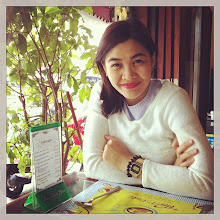And, we finally arrived the Summer Palace. ♥
The construction started in 1750 as a luxurious royal garden for royal families to rest and entertain. It later became the main residence of royal members in the end of the Qing Dynasty. However, like most of the gardens of Beijing, it could not elude the rampages of the Anglo-French Allied Force and was destroyed by fire. According to historical documents, with original name as 'Qingyi Garden' (Garden of Clear Ripples), the Summer Palace (Yiheyuan) was renamed after its first reconstruction in 1888. It was also recorded that Empress Dowager Cixi embezzled navy funds to reconstruct it as a resort in which to spend the rest of her life. In 1900, Yiheyuan suffered another hit by the Eight-Power Allied Force and was repaired in the next two years. In 1924, it was open to the public. It ranked amongst the World Heritage Sites by UNESCO in 1998, as well as one of the first national AAAAA tourist spots in China. SOURCE.
With so many sights to see, I didn't know where to look!
The court area. It is located in the northeast of the Summer Palace, and it spreads from East Palace Gate to the northeast coast of Kunming Lake. This was a substitute where Empress Dowager Cixi and Emperor Guangxu met officials and conducted state affairs. With the same pattern of the imperial palace of China-'Palace in front and garden behind', the Court Area consists of sections for both court affairs and living. East Palace Gate and Hall of Benevolence and Longevity served as office of the Emperor. The Hall of Jade Ripples was for Guangxu to live in and the Hall of Joyful Longevity for Cixi. There are also the Garden of Virtue and Harmony where Cixi was entertained and Yiyun Hall where once lived the Empress Longyu. Moreover, this area is an integrated transport hub and the first best stop for visitors to enjoy attractive view of Kunming Lake and Longevity Hill.SOURCE.
Took a quick break and decided to try this... YUM!
Rear Hill Area. It is quiet as compared to Front Hill Area. Most constructions were never able to be repaired after wars, only a few ruins are left. In the axis of Rear Hill Area, there used to be a religious building group-Houda Temple, a composite structure with both Han and Tibetan characters. Although the constructions are fewer here, it has a unique landscape with dense green trees and winding paths. Strolling here, visitors can feel a rare tranquility and elegance. Famous scenic spots include Garden of Harmonious Interests, Hall of Increasing Longevity, Four Great Regions, Presence of Virtue Temple and Hall of Serenity, etc. SOURCE.
Planning to go there as well? Here are the steps on how to get there...
Tourists can enter the palace from the North Palace Gate, the East Palace Gate, the New Palace Gate and the West Palace Gate.
By Bus:
Take bus 330, 331, 332, 346, 508, 579, 584, 601, 608 or 696, get off at Yiheyuan Station and then walk west to the East Palace Gate.
Take bus 469 or 539 and get off at Yiheyuan West Palace Gate Station.
Take bus 331, 332, 333(内), 333(外), 375, 432, 438, 498, 508, 579, 584, 594, 601, 664, 697, Te 18, Te 19, Te 6, Yuntong 106, Yuntong 114 or Yuntong 118, get off at Yiheyuanlu Dongkou Station (The Eastern End of Yiheyuan Road) and then walk west to the East Palace Gate.
Take bus 303, 330, 331, 346, 375, 563, 584 or 594, and get off at Yiheyuan North Palace Gate Station.
Take bus 74, 374, 437 or 952 and get off at Xin Jian Gong Men (Yiheyuan New Palace Gate) Station.
By Subway:
1. Subway Line 4: get off at Beigongmen, take exit D and walk to the North Palace Gate; or get off at Xiyuan to reach the East Palace Gate from exit C2.
2. Subway Line 16: get off at Xiyuan and leave from exit C2. Walk west to the East Palace Gate.











0 Response to "2016 Bonding in Beijing: Summer Palace is Love."
Post a Comment